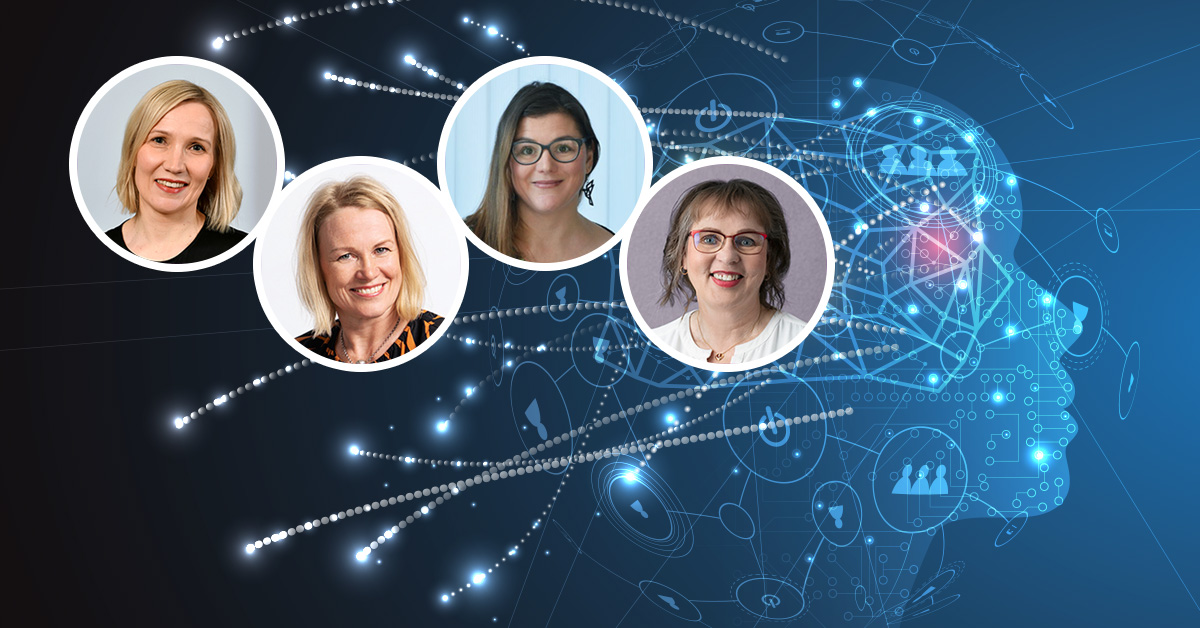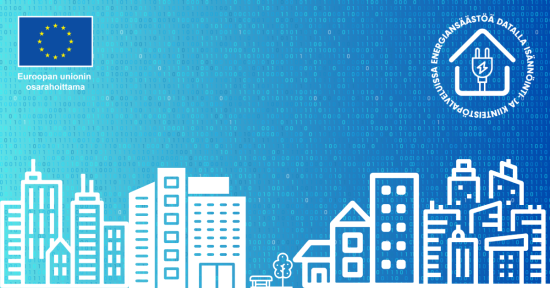Digital skills are needed to navigate through a continuously changing terrain. Digital development is quick in today’s world, and individuals and organisations alike may struggle to keep up. Individuals should develop their digital skills throughout their lives, and organisations should take a strategic approach to skills. This way society can make the most of the potential from digitalisation.
Merja Sjöblom, Accelerator of Digital Skills at TIEKE“Technology promotes and supports learning, and learning should be continuous in today’s increasingly digital world. Children should already be provided with the means to develop their digital skills. Everyone should have generic basic skills on, for example, the use of AI and how to ensure data security.”
In order for society to thrive, the learning needs of people in working age must be identified both in Finland and internationally. We also need tools and methods for acquired skills to be made visible and harnessed for proper use.
“Digital skills should be brought into a nationwide system. When people go into a new line of work, it would be easy show what their skills are. A general model to identify skills and competences is required for this,” says Sjöblom.
Report: How to make non-formal competence visible
Some compatible ways to identify skills have already been developed. A Government working group ‘Identifying the skills of working-age people’ project is one that has taken the initiative.
The purpose of the working group is to find tools to identify skills acquired outside the formal education system. The working commissioned a report on the matter, carried out by Demos Helsinki, Innolink and TIEKE.
According to the report, there are already a number of tools for competence identification, but we are still far from a uniform system. In order for the existing tools and operating models to be properly adopted, skills identification must be recognised in companies’ strategic intent.
Digital skills badges are an excellent way of identifying and articulating digital skills, which is why the working group recommended in its interim report that the system of skills badges should be developed.
Open-badge constellation for the circular economy – driving sustainable growth
There is an urgent need for circular economy skills in the labour market, which is why the governmental working group has initiated a study into and piloting of the open-badge constellation. The objective is to create a system whereby circular economy skills are identified and made visible in the labour market.
Sjöblom says that the Open Badges for Circular Economy are particularly useful for employers that want to improve their organisation’s circular economy competence on their path to changing their organisation in that direction.
“The open badges will provide a comprehensive picture of the current state of and development needs for an organisation’s circular economy systems.”
Jenni Larjomaa, a Senior Specialist at the Ministry of Economic Affairs and Employment, says that the construction, chemical and technology industries are key circular economy players.
Jenni Larjomaa, Senior Specialist at the Ministry of Economic Affairs and Employment“We hope to see companies piloting these open badges. Lifelong learning and the utilisation of open badges are important components for Finland in terms of sustainable growth.”
According to Larjomaa, the challenge with the ‘Identifying the skills of working-age people’ project is putting it into practice.
“We will be compiling the final report on the reports next autumn. The results of putting the system into practice will depend a lot on how that report is used.”
Data spaces revolutionise data sharing and utilisation
The skills badges represent one type of skills data for individuals. The sharing of skills data between organisations is made easier by data spaces.
At best, data spaces are extensive data areas beyond national borders that concern competence, public administration, agriculture, health, etc. The purpose of data spaces is to promote data sharing and thereby the value of data for the benefit of the European economy and society.
We should also pay attention to the benefit and use cases of data sharing in data spaces, says Headai chief business officer Anu Passi-Rauste. She says that alongside technical development, it is actually more important to test and try out various data space solutions related to skills and to disseminate the results for wider use.
Plenty of work is being done for the implementation of data spaces at the moment. Alongside this, it is vital that we create a common drive to put data sharing and data exchange into practice, says Passi-Rauste.
Finland – a pioneer in the skills data space
In Finland, TIEKE is also working on data space themes, highlighting businesses’ data space needs and helping them make better use of data spaces.
DS4Skills (Data Space for Skills) built an operating model for data sharing. This work involved Finnish operators. Currently there are new development projects in progress to implement actual data spaces for skills.
According to Passi-Rauste, Finland could be a pioneer in the development of data spaces for skills.
Anu Passi-Rauste, chief business officer, Headai“It’s important that we keep learning new aspects about the digital reality. How, for example, do we control the latest artificial intelligence and identify competence about it? Data spaces provide a reliable infrastructure that facilitate and speed up data sharing in the ecosystem and the creation of value from data by means of various services. In the end, this will benefit everyone.”
Digital compass: example of common EU-level digital skills development
The data space of competence is one example of how the EU is investing in the development and identification of digital skills. Another good example is the digital compass, a tool that provides EU-level guidelines for the digital transformation. It lists goals that promote the digitalisation of the entire society.
Finland’s digital compass guides the country’s digitalisation development. Just like the EU-wide compass, it lists goals for promoting digitalisation. The goals have been divided into four areas: skills, infrastructure, public services, and businesses.
There is still plenty of work to do to reach the goals of the digital compass.
Educational institutions must also step up
Digitalisation poses new challenges also to educational institutions as new areas of expertise emerge that must be covered. Educational institutions should also be able to discover students’ skills acquired outside the formal educational system.
At the Turku University of Applied SciencesSenior Lecturer in Energy and Environmental Technology Henna Knuutila says that they discover skills thought collaboration with businesses, continuing education, alumni cooperation and research and development projects.
Henna Knuutila, Senior Lecturer at the Turku University of Applied Sciences“At the moment we are well equipped to meet needs that arise from businesses. We are speeding up research and development and our training in the circular economy. We are also trying to predict what kind of expertise organisations will need in about five years.”
TIEKE helps in skills recognition
- The open badges are practical tools for skills recognition.
- The constellation benefits all parties: both individuals and various organisations and businesses.
- The open badges can be used in a number of ways. You can
- make use of existing constellations. The digital constellations are an easy way to confirm your own digital skills. Learn about the open-badge constellation of digital skills and start using them.
- develop new constellations with us for new areas. We are currently developing open badges in several projects.
- get help for developing open badges for your own organisation. For example, Helsinki Region Environmental Services HSY tailored their open badges for their own needs with TIEKE’s assistance (article in Finnish).
- increase understanding of open badges in a network. TIEKE coordinates the Badge Finland network and holds seminars to present various ways of making use of open badges. Learn about the network and future seminars (in Finnish).
Collaborate with TIEKE?
Want to help organizations in themes such as digital competence, data economy, real-time economy, or sustainability? Partner with us!
TIEKE Finnish Information Society Development Centre is a non-profit organisation founded in 1981 aiming to develop, improve and support a thriving information society and all its digital endeavours.
We help organizations in various ways:
- Projects and initiatives
- Networking and ecosystem work
- Surveys and studies
- Expert services and advice
- Webinars, online trainings and coaching programmes
- Materials and guides
We have a track record working in various project roles: coordination, partner, expert, comms and more.
We run around 15 projects per year and are familiar with instruments such as CERV, Erasmus, ERDF and ESF.
We work with wide array of target groups such as SMEs, large companies, educational organizations, public sector and associations.
Don’t hesitate to get in touch to discuss collaboration opportunities with us!










